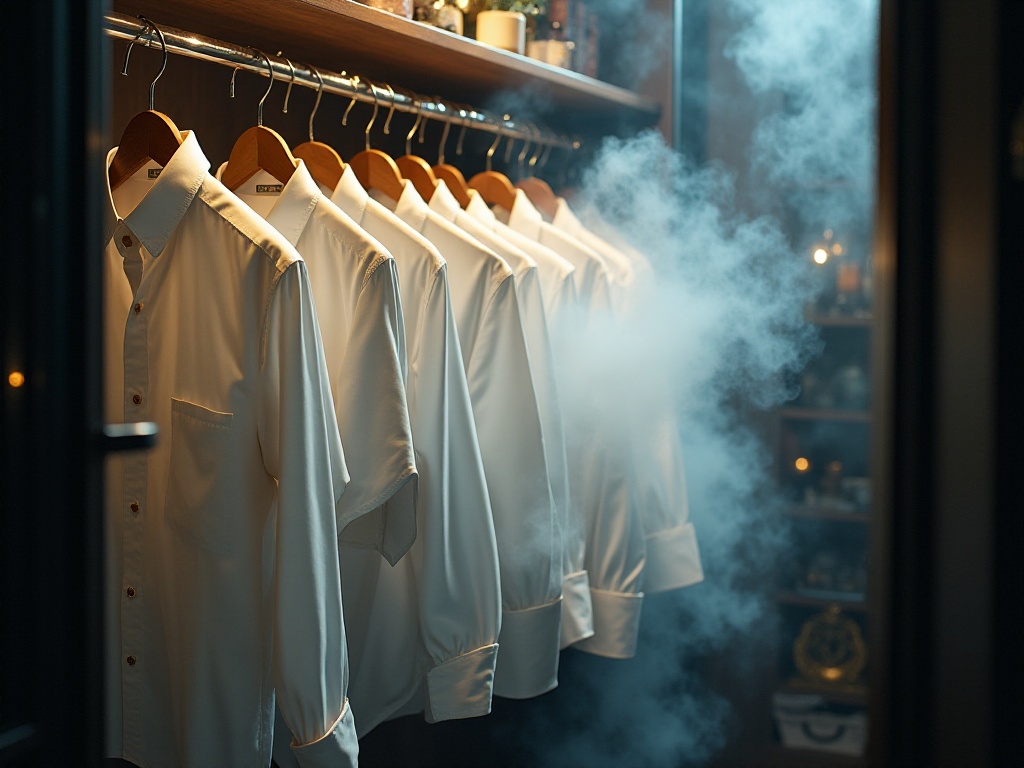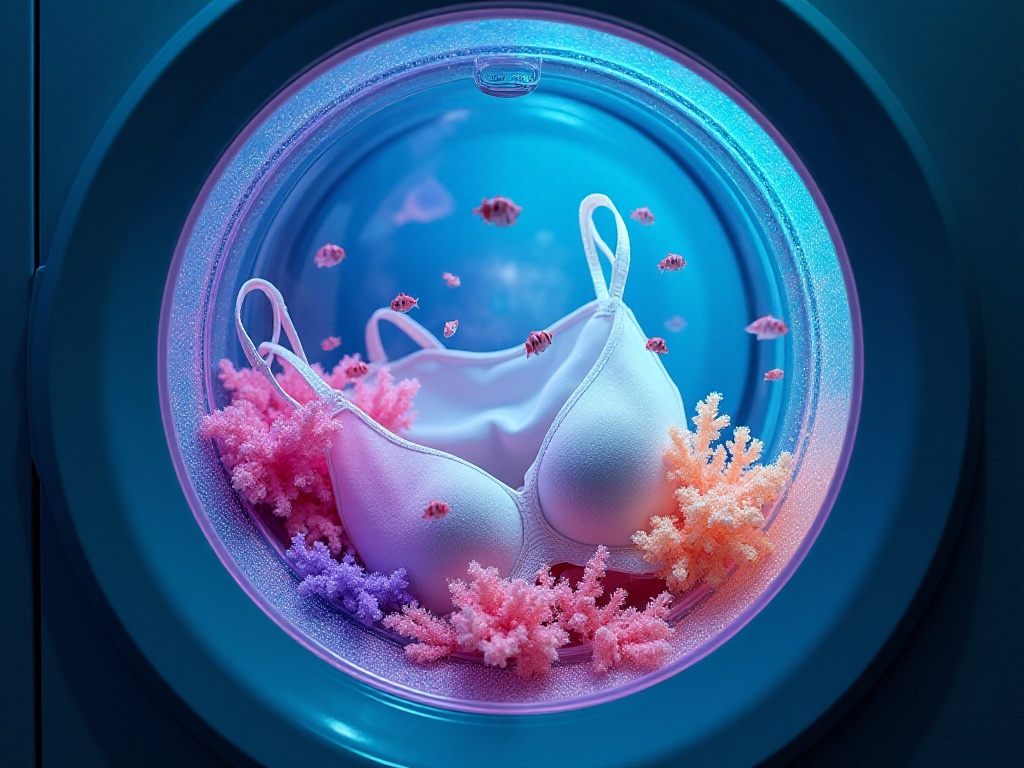Introduction
Have you ever experienced this: new shirts become misshapen after just a few washes, sweaters get covered in pills, jeans fade with each wash? Do you feel like you never have enough clothes while your wallet keeps getting emptier? Actually, these problems aren't due to clothing quality, but rather our care methods.
As a blogger who has been researching clothing care since college, I used to be a "spendthrift," always buying new clothes when old ones wore out. Until one day, I realized I had spent nearly 20,000 yuan on clothes in a year, which made me reflect: isn't there a better way? After years of research and practice, I finally found the secret to making clothes "long-lasting," and today I'm sharing these valuable tips with everyone.
Sorting Laundry
When it comes to clothing care, the most basic yet easily overlooked aspect is sorting laundry. I've seen many friends, especially young people who just started living alone, throwing all clothes into the washing machine together - this is really damaging to the clothes.
I remember doing the same thing when I first started college. Once, I washed a new red hoodie with a white T-shirt together, and you can imagine the result - the white T-shirt turned pink, and an ugly uneven pink at that. Worse still, that white T-shirt was a limited edition I particularly loved, and it was ruined in that one wash. Since then, I started seriously studying how to sort laundry properly.
Different colored and textured clothes washed together can not only cause color bleeding but also damage from friction. For example, I recently received a help request from a reader who washed her new red T-shirt with white underwear, resulting in all the white underwear turning pink. This situation could have been completely avoided.
The correct approach is to sort clothes scientifically. First, separate them by color into dark, light, and white categories. Dark colors include black, navy, dark purple, and other dark tones; light colors include pink, light blue, light green, etc.; and white is for pure white items. This sorting prevents color bleeding issues.
Second, sort by fabric type. Cotton and linen items are more durable and can handle machine washing; synthetic fabrics should be washed on gentle cycle; while delicate wool and silk items are best hand-washed. I usually keep three different laundry baskets in my closet specifically for sorting dirty clothes.
In practice, I suggest doing this: set aside one day each week for major laundry, like weekends. For daily needs, do smaller loads based on how dirty the clothes are and the quantity. Before each wash, check all pockets to avoid the awkward situation of tissues or coins hiding in clothes.
Understanding Care Labels
Every piece of clothing comes with its "instruction manual" - the care label. Unfortunately, many people cut them off, which is really a shame. These small symbols actually contain a lot of important information. Just like we carefully read instruction manuals for electronics, understanding clothing "instructions" is equally important.
Let me give you an example. I recently bought a cashmere sweater, and the label symbols showed it could only be hand washed, water temperature shouldn't exceed 30 degrees, no machine washing, no tumble drying. If I hadn't read this label and had thrown it in the washing machine, this expensive cashmere sweater might have turned into "children's clothing." I learned this painful lesson during my student days.
So what do these symbols on the labels mean? Let me explain in detail. The tub-shaped symbol represents washing method - if there's a hand in the tub, it means hand wash only; if there's a temperature number, it means water temperature shouldn't exceed that temperature. The triangle symbol represents bleaching method - if the triangle is hollow, bleach can be used; if the triangle is crossed out, bleaching is prohibited.
The circle symbol represents dry cleaning method - if there are letters in the circle, different letters represent different dry cleaning solvents; if the circle is crossed out, dry cleaning is not allowed. The square symbol represents drying method - if there's a dot in the square, it means low-temperature drying is okay; if the square is crossed out, no tumble drying.
The iron symbol is more straightforward, representing ironing method. The number of dots in the iron indicates temperature - one dot for low, two for medium, three for high. If the iron is crossed out, no ironing allowed.
I suggest checking these labels when buying new clothes. If you find a piece requires particularly complex care, and you don't have enough time and energy for such care, it's better not to buy it. After all, clothes that can't be properly cared for will just become "decorations" in your closet.
A helpful tip is to take photos of clothing care labels with your phone, so you can still check care instructions even if the label falls off later. I have a dedicated photo album for storing pictures of various clothing care labels, making it easy to check when doing laundry.

Fabric Care
Different fabrics require different care methods, which is particularly important. Just as we wouldn't treat different pets the same way, different fabric materials need to be "taught according to their nature."
Cotton clothing is the easiest to care for and can be machine washed, but water temperature shouldn't be too high. I recommend using water around 30 degrees, which effectively cleans while protecting fabric fibers. According to related research, cotton clothing regularly washed in high temperatures has its lifespan reduced by over 40%. This data shocked me, as I used to think hot water cleaned better.
When washing cotton items, be careful not to use too much detergent. Many people think more detergent means cleaner clothes, but this is a misconception. Excess detergent doesn't make clothes cleaner but instead remains in fabric fibers, causing clothes to become stiff, yellow, and even trigger skin allergies. Generally, one capful of detergent is enough for a normal load of laundry.
Synthetic fabrics, like polyester and nylon, should be washed gently. The biggest characteristic of these fabrics is their tendency to generate static and pill. To reduce this, I recommend adding fabric softener in the final rinse. However, note that sportswear shouldn't use fabric softener as it affects the moisture-wicking and breathability functions.
Delicate fabrics like silk and wool need extra care. Data shows that 90% of wool clothing damage is caused by improper washing methods. I recommend using special wool detergent, keeping water temperature below 20 degrees, gently squeezing rather than rubbing.
I have a tip for washing wool items: fill a basin with appropriate amount of warm water and special detergent, then fully submerge the garment and gently press a few times. Don't scrub hard like with cotton items, as this will cause wool fibers to deform and pill. After washing, gently absorb water with a towel, then lay flat to dry. Never wring or expose directly to sunlight.
Silk clothing care requires even more patience. First, silk items should be washed promptly after each wear, as sweat and stains can cause permanent damage if left on silk too long. Wash in water below 30 degrees using special silk detergent, gently rubbing. Rinse several times with clean water to ensure detergent is completely removed.
When drying silk items, avoid direct sunlight and choose a cool, ventilated place. For silk shirts, it's best to button them up while wet for a crisper finish when dry.
Knitwear care also has its tricks. Many don't know that hangers are actually knitwear's biggest enemy. Hanging causes shoulder deformation, especially in thicker sweaters. The correct method is to fold knitwear and store in drawers; if worried about creases, place soft tissue paper between folds.

Jeans Care
Speaking of jeans, many might not know they're actually one of the garments that need least frequent washing. According to Levi's research, washing jeans after every 10 wears is ideal. This conclusion might surprise many, but it makes sense when you think about it. Jeans were originally workwear, designed to be durable and dirt-resistant.
In my experience, unless jeans are visibly dirty or smell, there's no rush to wash them. If concerned about hygiene, you can do simple treatments without washing. For example, turn jeans inside out and air them out after each wear. If there's a slight odor, you can spray some clothing sanitizer.
When washing is necessary, there are several important considerations. First, always turn jeans inside out before washing to reduce wear on the front and protect the distressed effect. Second, water temperature must stay below 30 degrees, as high temperatures accelerate fading and shrinkage.
A helpful tip is to soak jeans in vinegar water for 30 minutes before first wash to set the color and prevent fading. Specifically, prepare a basin of cold water, add about 50ml white vinegar, and soak the jeans. I've used this method for several years with good results.
It's best to use special denim detergent, as regular detergent may accelerate fading. For dark jeans, consider using special dark clothing detergent. After washing, don't wring forcefully - gently squeeze out water instead.
When drying jeans, avoid direct sunlight. Strong sunlight not only accelerates fading but also makes denim stiff. Choose a cool, ventilated place to dry. When hanging, clip the leg bottoms with hangers to avoid obvious crease marks.
If you particularly like skinny jeans, pay special attention when washing. Skinny jeans contain elastic fibers, and excessive scrubbing will damage these fibers, causing jeans to lose elasticity. Recommend gentle hand washing or using washing machine's gentle cycle.

Storage Tips
Proper storage can double clothing lifespan. According to textile research institutions, improper storage methods reduce garment lifespan by 30%-50%. This data reminds me of clothes I previously ruined through improper storage - both heartbreaking and regrettable.
First, let's talk about hanger selection. I've seen many people use thin wire hangers to save money, which is practically "abusing" clothes. Good hangers should have sufficient width and thickness to simulate shoulder curves. For important pieces like suits and coats, recommend using wooden hangers - though more expensive, they better maintain garment shape.
Wool sweaters and knitwear are best folded, not hung. Hanging causes deformation, especially shoulder areas easily marked by hangers. My approach is to fold sweaters twice, then place in drawers or closet shelves. If worried about creases, place tissue paper rolls at fold lines.
Same goes for T-shirts - recommend folding. I usually use the vertical storage method popular among Japanese housewives, which saves space and prevents disturbing other clothes when retrieving items. Specific folding method: lay T-shirt flat, fold in half, then roll from bottom up, finally store vertically in drawer.
Suits and coats need quality hangers, maintaining shape. When choosing hangers, ensure proper width - too narrow causes shoulder deformation. When hanging suits, button them up to maintain shape. For long-term storage, best use dust covers.
Speaking of dust covers, they're important clothing protection tools. But note, don't substitute plastic bags for dust covers. Plastic bags aren't breathable, causing mold with long-term use. Professional dust covers usually use non-woven fabric, both dust-proof and ventilated.
Seasonal storage is also important. I recommend thoroughly washing seasonal clothes, drying completely before storage. Can include natural moth-repellent sachets like lavender or mothballs. But note, these shouldn't directly contact clothes.
Also consider humidity during storage. If home is particularly humid, consider placing desiccant packets in closets. But remember to replace regularly, as ineffective desiccants won't prevent moisture.
Leather goods storage needs special attention. Leather clothes and bags should be treated with professional leather care liquid before storage, preventing cracking. Maintain ventilation during storage, avoid direct sunlight. For long-term storage, best to "air out" periodically.

Conclusion and Outlook
With these care techniques, your clothes can definitely last much longer than others'. Remember one point: rather than frequently buying new clothes, better maintain existing ones. This not only saves money but also contributes to environmental protection.
Actually, clothing care isn't just about saving money, it's a life attitude. When we start seriously treating every item around us, we'll find life can be quite exquisite. Every carefully maintained piece of clothing carries our memories and stories.
Like my denim jacket I've worn for five years - though somewhat faded, it's still one of my favorite pieces because of consistent good care. It has witnessed my growth and recorded many beautiful memories. This feeling can't be replaced by new clothes.
Do you have other clothing care tips? Welcome to share your experience in the comments. If you found this article helpful, don't forget to share with friends who need it. Next time we'll discuss how to handle various common clothing stains, remember to follow me.








